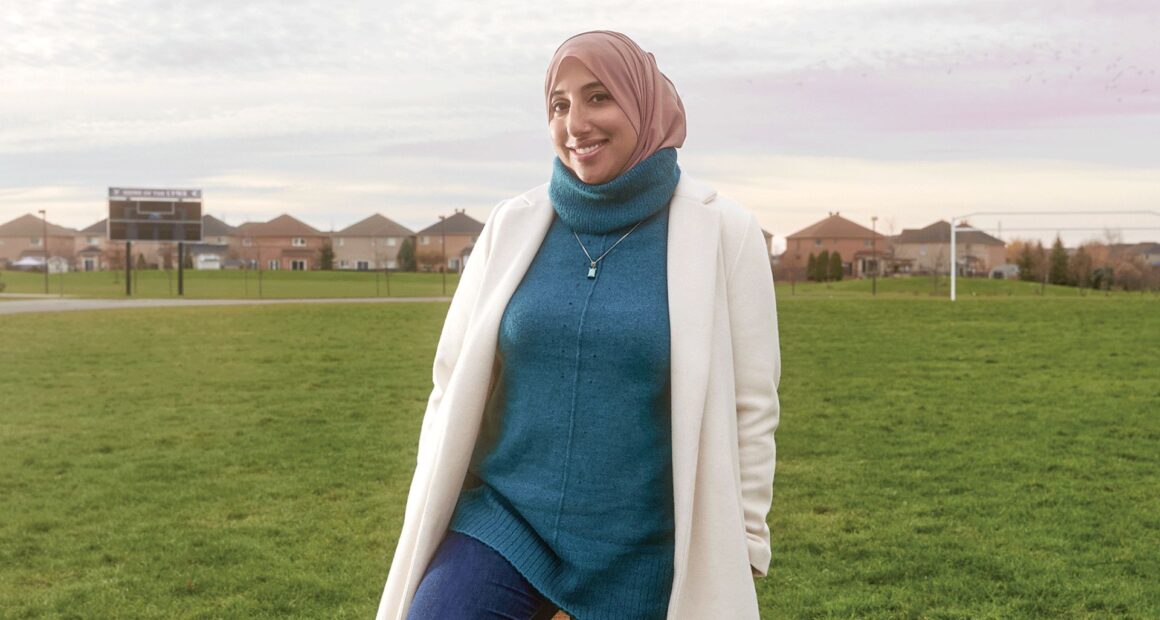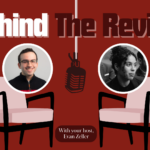CBC sports journalist Shireen Ahmed is changing the game—just ask Don Cherry
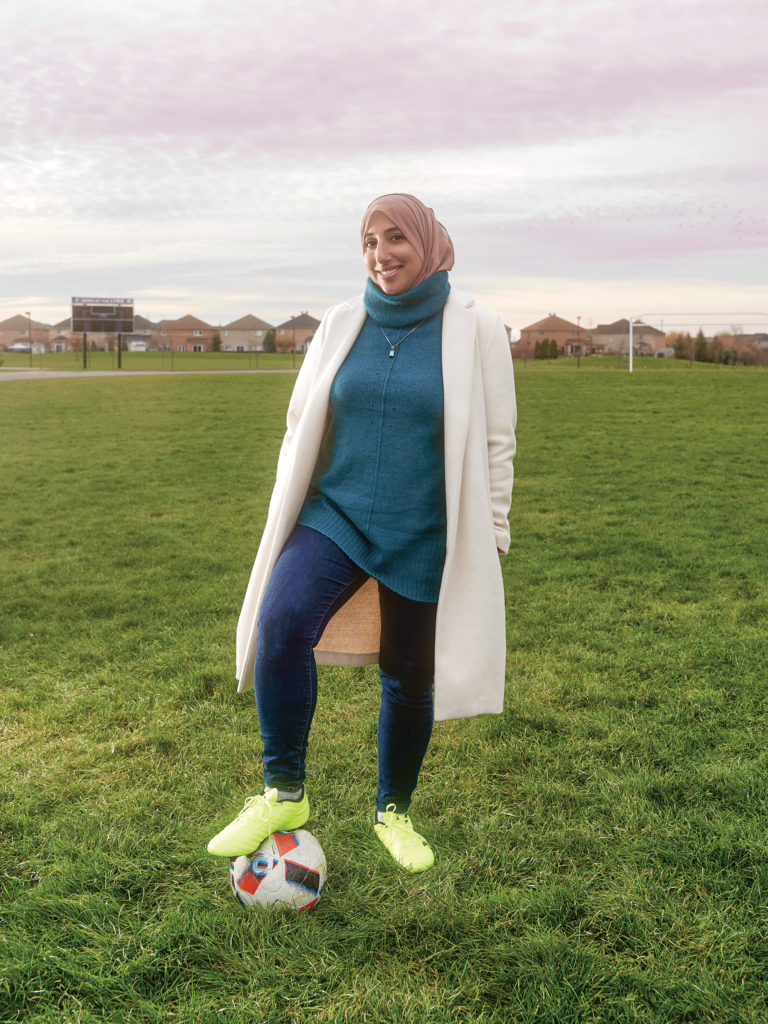
It’s April 2024, and Shireen Ahmed is sitting in her parents’ home in Windsor, Ontario, her hijab draped loosely over her head. It’s a three-hour drive from Ahmed’s own home in Toronto, but these visits with her mother and father would be routine regardless of the distance. It’s a few months before the 2024 Olympics and Paralympics in Paris, for which Ahmed is to write and create video essays as part of CBC’s coverage, on top of her regular column. But a scheduled call with CBC Olympic executive producer Sherali Najak has Ahmed slightly apprehensive. “I had no idea what Sherali was going to ask,” she says now. “I thought it would just be a check-in, but then he had senior director Paul Burke on the call, too. And I was like, ‘Why is Burke on the call—am I getting fired?’” she recalls, jokingly. She wasn’t, but unbeknownst to Ahmed, the call would change her career.
Finally getting on the line, Najak and Burke delivered the news—Ahmed had been selected to join the Olympic broadcast team as a special analyst and commentator. She would be the first hijab-wearing woman on an official Olympic broadcast in Canada.
After the Zoom call, Ahmed was hit with a wave of introspection. In that moment, as always, she was acutely aware of her racialized differences—she was an image far removed from the typical cast of characters viewers might expect on-screen. Yet, as she glanced down at herself, Ahmed felt a sense of excitement. She realized that while she didn’t fit the conventional image of a sports journalist, she represented so much more. She was precisely what so many Canadians see in their communities—on public transit, at the grocery store, in neighbourhood gatherings. But despite the thrill of that moment, Ahmed’s thoughts turned to the reality of hijab-wearing athletes in France, too—an irony that continued to underline the complexity of representing a marginalized community on the world stage. “I was really proud to be the first hijab-wearing woman on a national Olympic broadcast, but I was aware that the host nation would not give my sisters the same opportunity.”
Since moving on from social work to pursue a career in journalism more than a decade ago, Ahmed has been paving the way for racialized women in sports media and making space for often overlooked voices. In 2020, the visibility of journalists from marginalized communities in the industry changed even more. It was a year marked by upheaval, a moment when the world paused, witnessed tragedy, and then restarted with an amplified awareness of inequity, injustice, and the power of voices that had been silenced for too long. The murder of George Floyd sparked global protests against racial injustice, prompting conversations about systemic racism across a number of industries. This heightened awareness rippled into all sectors, and sports journalism was no exception. Reporters, in greater numbers, began addressing the lack of diversity in leadership, the exploitation of athletes of colour, and the role of sports in perpetuating or challenging societal inequities. Athletes were pushed further into the world of advocacy, voicing the grief and anger of the communities they represent. Sports organizations and leagues were forced to confront systemic racism and public outcry. Political and social issues began permeating sports coverage more profoundly than ever before.
For decades before this transformative era, the prevailing attitude was “stick to sports.” Athletes and reporters were discouraged from engaging in political discourse and were berated when they did. But the landscape has since shifted—CBC’s Olympic broadcast, and Ahmed’s role within it, reflect that change. Sports journalism today has transcended recaps of wins and losses—political and social narratives are more interwoven than ever. Journalists like Ahmed have been at the forefront of this transformation, exemplifying how sports media can challenge outdated norms. As one of the most prominent sports journalists in Canada, Ahmed’s work amplifies marginalized voices, and tackles issues like systemic racism and gender inequity underlying the world of sports. In this evolving landscape, her ascent is proof that sports journalists are not just spectators, but rather essential participants in the broader discussions shaping our world.
Sports journalism’s record is fraught. Howard Cosell, a prominent sports writer and broadcaster of the 1970s and ’80s, referred to sports as the “toy department of human life,” a phrase that came to be used for sports journalism’s place in the newsroom, too. Historically, sports were considered fluff compared to the beats of political, business, or science journalism. Sports are fun and games, the thinking went. They aren’t life-or-death or cognitively challenging.
Although not outwardly said in contemporary media, up until 2020, this was the common sentiment toward sports journalists. In 2018, Laura Ingraham, a longtime political commentator on Fox News, suggested LeBron James and Kevin Durant should “shut up and dribble” after the NBA stars appeared on ESPN talking about politics, President Donald Trump’s first years in office, and the challenges of being a Black man in America. By extension, sports journalists were essentially told to “shut up and report” when they ventured outside of discussing sports directly.
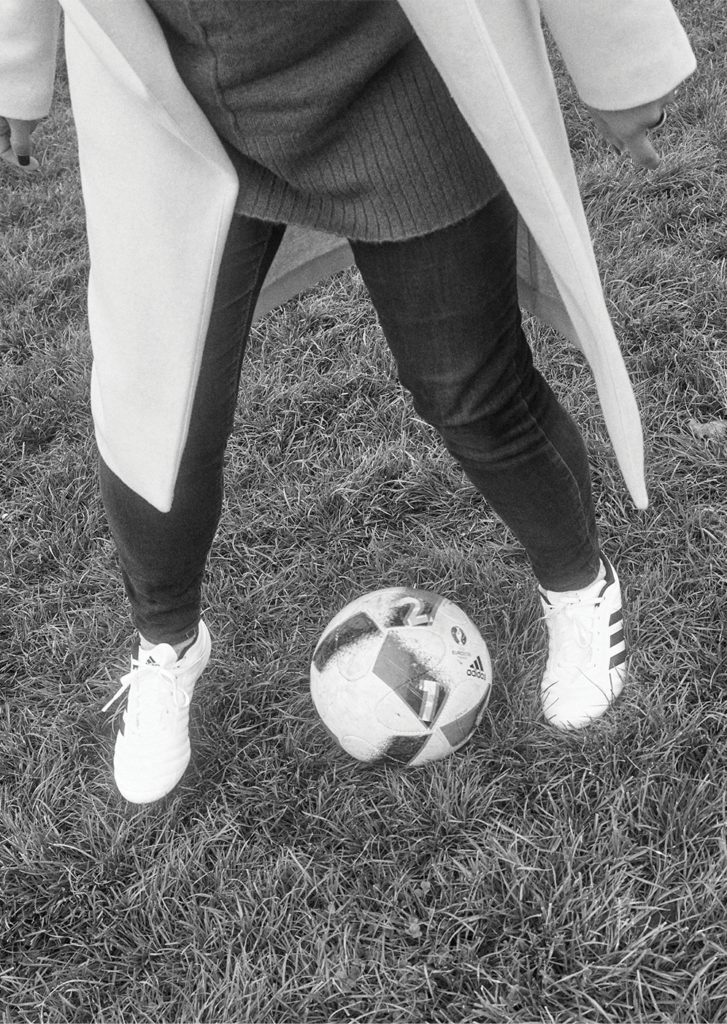
“This is an ongoing issue,” says Dave Zirin, arguably the go-to progressive political sports journalist in the United States, and a mentor to Ahmed. “Sports journalism has its ups and downs. The progress isn’t linear. There have been incredibly glorious periods of sports writing, where people brought sports and politics together, in the 1890s, the 1920s and in the late 1960s and early ’70s. Then it did go dormant for about a quarter century.” Zirin concedes that “it has always been a struggle,” but says between 2016 and 2020, in the years leading up to the industry’s transformative period, he started to feel a shift. Following the murder of George Floyd, amid the pandemic, the sports landscape began to change. Athletes were less likely to stay silent, and sports journalists were granted more opportunities to address broader societal conversations, to explore themes of justice, activism, and power.
Ahmed has pondered issues of inequality and exclusion her whole life. She’s been a student of sport and media since her younger days in Halifax, Nova Scotia, in the early ’90s, when her Pakistani father, who worked in management at CBC, would urge her to do her own media studies. “My father would sit me down and get me to analyze essays from different Canadian media outlets,” Ahmed says. “He always spoke about the power of the spoken and written word.” Outside the house, she was often on the soccer field, her first love. “I’m an attacker,” she says. “I was not the best finisher on the pitch but I was a great passer because I could anticipate what was happening. I pride myself on my passing.”
That vision, and relentless approach, have since carried her far beyond the soccer field. However, Ahmed’s road to being Canada’s first hijab-wearing Olympic commentator was long and unconventional. After graduating high school in 1995, Ahmed moved from Halifax to attend the University of Toronto, studying Canadian constitutional politics with a minor in women’s studies (now women and gender studies). Ahmed hesitates before admitting she didn’t finish her undergraduate degree. “I got married and had a baby while I was still in university, and then I had three more.” Being a homemaker to her four children is a role she still takes pride in. “I don’t care what other people think of that,” she says.
“Her trailblazing ability to communicate difficult subjects to audiences is one of Shireen Ahmed’s greatest powers”
Courtney Szto
In 2008, Ahmed dove into the frontlines of social work with a program focused on helping young Muslim women integrate into Canadian society. In 2012, as an avenue for self-expression and as an outlet from the heaviness of her work, she started a Tumblr blog called Tales from a Hijabi Footballer, where she wrote about sport, politics, racialized and Muslim women’s issues, and their intersectionality, informed in part by her work experience. “The idea of harm reduction in social work is what really stays within my practice of journalism,” she says.
This point of view—which is clear and unmistakable in Tales from a Hijabi Footballer, alongside unapologetically direct and candid writing—led her to publish over 100 bylines, including in legacy publications, earn awards for her journalism, and speak at keynote events around the world. Years later, in 2020, Ahmed applied to the master of media production program at Toronto Metropolitan University (TMU). “I was really nervous because this had actually been my personal shame, that everyone in my family had graduate degrees and I hadn’t,” she says. “It was really important to me, and I remember getting the acceptance letter and I think I sat on my sofa and cried. I was a divorced single mom with four kids that were teenagers and I had been like, ‘what am I going to do with my life?’”
Just as she was about to graduate from the accelerated 12-month version of the program, Ahmed was recruited to be a professor in TMU’s journalism department. “The opportunity to be in front of students,” she says, “to teach them about sports journalism and be real about the industry—and for me to say to them, ‘I need you to be aware of where you are and what the industry looks like’—has changed my life.”
Courtney Szto, an associate professor in the School of Kinesiology and Health Studies at Queen’s University, and one of Ahmed’s best friends, believes her ability to communicate difficult subjects to an audience is one of Ahmed’s greatest powers, alongside her trailblazing and accolades in the industry. “When Shireen guest speaks for my classes, she has such an impact on students, in that they’ve never seen a hijabi brown woman speaking so passionately, intelligently and unapologetically about sports,” Szto says. “She is creating a space for the younger generation to see themselves as a possibility in a space where women of different backgrounds were never really wanted. That’s definitely one of the biggest impacts that Shireen has had.”
The ability to create space for underrepresented people, especially for marginalized students, can have a profound impact on their educational and professional lives. Research shows that providing compassionate and conversational environments in a classroom can help set students up for success outside of it. These are the types of spaces Ahmed has been fostering both inside and outside of her classroom for years.
Mariam Kourabi, a hijab-wearing sports lover, and founder and host of the SHE Scores Bangers podcast and newsletter, did not meet Ahmed in her classroom. But she still found solace in the space Ahmed created. “I consumed a lot of her work with such due diligence. It feels like an honour to be able to read her work,” says Kourabi. “I never thought I was going to launch a podcast and talk about women’s soccer. But seeing Shireen do it, be on TV, and be so confident at what she does, changed how I thought about things.”
Since meeting at a FIFA Women’s World Cup pre-competition media scrum in 2023, Ahmed has continued to encourage Kourabi to break down barriers. “She always reminds me I deserve to be wherever I am,” Kourabi says. “She gave me confidence to be able to take on a critical lens and move away from the bias that we see in the media. She’s had a game-changing effect on my work.”
It is not only up-and-coming journalists that Ahmed has inspired. Claire Hanna, a sports reporter for TSN in Ottawa, found Ahmed in 2016 when she was seeking out feminist sports podcasts. “I was thirsty for other women’s thoughts and opinions in the industry,” Hanna says. “Sports dialogue can get really stale in Canada.”
What she found was Burn It All Down, a podcast hosted by Ahmed, Amira Rose Davis, Brenda Elsey, Lindsay Gibbs, and Jessica Luther, which focused on sports culture from an intersectional feminist lens. Topics like the treatment of women, non-binary and gender-nonconforming people in sports were intensely and compellingly discussed over the span of five and a half years and 267 episodes. The show is currently on hiatus. “Burn It All Down was a gift,” says Ahmed. “God, I miss it. It’ll always be my greatest professional success. It filled my cup—when I didn’t have the confidence to do half the shit I wanted to do, they were there saying, ‘oh, you got this.’”
Beyond inspiring Ahmed to keep breaking boundaries, Burn It All Down pushed others in the industry to view sport through a different lens. “I’m a white woman,” says Hanna. “So, I have a lot of privilege. When Shireen covered the intersectionality of race, gender, and sexuality in sports, that was important for me. I didn’t often think about those things. Shireen made me more aware, and helped me realize I had to do a better job of covering that in my work.”
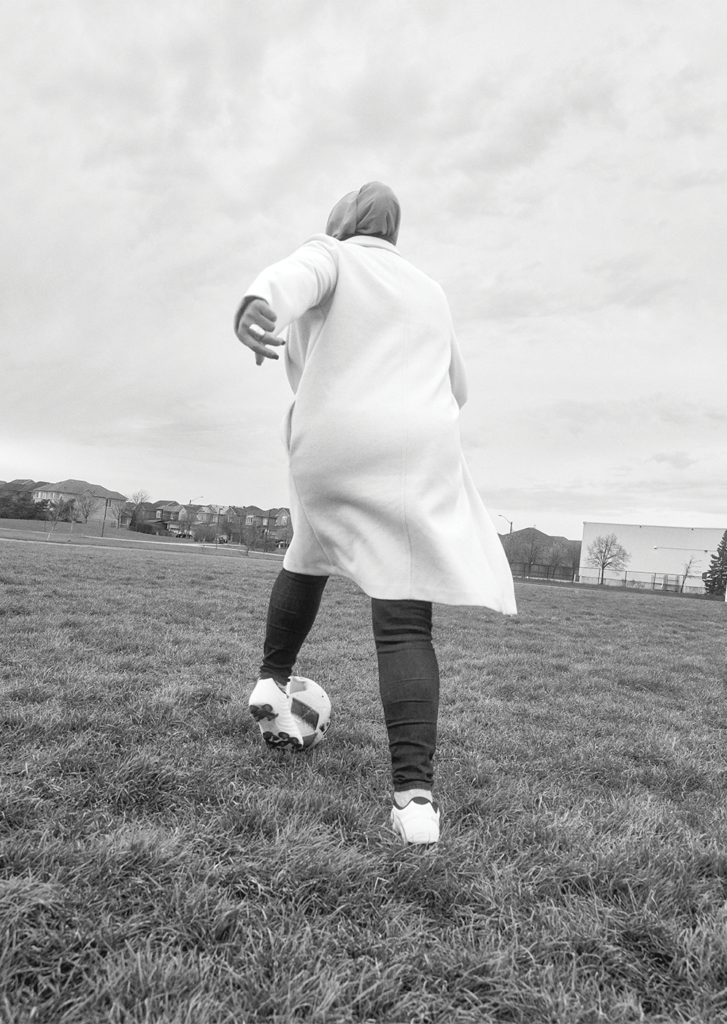
After discovering the podcast, Hanna and Ahmed became close friends. She’s since witnessed Ahmed’s impact on the industry firsthand, with one incident standing out among the rest. In 2019, before the boom of the politicization of sport, Ahmed wrote an opinion editorial reacting to racist remarks delivered by Don Cherry on a Hockey Night in Canada broadcast a couple of days before Remembrance Day. “You people…you love our way of life, you love our milk and honey. At least you can pay a couple bucks for a poppy or something like that,” Cherry said, implying that immigrants weren’t respectful enough of fallen Canadian soldiers. “These guys paid for your way of life that you enjoy in Canada. These guys paid the biggest price.”
One day later, Ahmed’s piece, “What Don Cherry forgets about Remembrance Day, hockey and what unites Canada,” was published on The Globe and Mail’s website. In it, Ahmed called for Cherry’s dismissal. “Fighting for justice and equality is what hockey needs. Don Cherry is the enemy of this fight. He needs to be muted—permanently,” she wrote. Cherry was fired the next day.
That incident drew more eyes to Ahmed’s work. Few had both the sports know-how and harm-reduction expertise to take on the Goliath known as Don Cherry. “It was amazing. I was getting texts saying, ‘You got him fired!’ But I remind people that it wasn’t me,” Ahmed says. “It was him.”
For years, Ahmed worked to create a niche as a freelancer through her Tumblr and podcast work, which gave her space to develop her voice and write against the norm as a columnist. “My platform was created by me and available to me.”
That’s why, by 2020, Ahmed was ready for sports media’s transformation. She was not posturing for the times. She was simply continuing to analyze sport and sport culture as she always had—prioritizing truth, quality, and humanity. “You have to tell the truth, even if you don’t benefit from it,” she says. “Like, too bad for you. This isn’t about you. It is literally about truth—that is what journalism is.” A reminder that’s especially poignant after October 7, 2023.
“We’re in a distinct era right now of fewer voices being heard,” says Zirin, “and that’s reflected itself most sharply in the ongoing genocide in Palestine. That’s really what makes Shireen so singular and so important. She was on the front lines when everybody was zigging, but then she held firm when everybody then chose to zag.”
Currently, Ahmed is one of the few hijabi women in Canadian sports speaking out against the norms that keep marginalized people silent. “What happens if Shireen stops writing tomorrow?” asks Szto, who sees Ahmed carrying a lot of that weight. “I’m not sure, if she stops, if CBC would take action in getting someone on Shireen’s type of beat.”
As the only hijab-wearing sports journalist in Canadian media, Ahmed acknowledges the significance of her speaking about the intersectionality of race, religion, and gender on a national level, even in a post-pandemic world. While there has certainly been a shift, it’s worth asking how meaningful it’s truly been. “We can look back now and ask, ‘Have the values really changed?’” says Szto, noting that it seems as though some media players have given themselves the “breathing room” to once again deprioritize reporting about racial injustice.
Maybe the toy department isn’t so trivial. Sports are lessons, blueprints for identity and possibility–especially for the youth
Ahmed similarly isn’t under the illusion that the industry has changed. “The system has never been made for marginalized people, whether they are racialized or disabled,” says Ahmed. “It is not being made for people in margins.” She understands there is plenty of work still to be done, and she’s looking to the sports journalists of the future to help bring us forward—those who look like her and those who don’t. That is why teaching is so important to her. “I can help foster the next generation,” Ahmed says, “And if they don’t look like me, I can help them look critically at sports like I do, and that matters too. I would rather have somebody who doesn’t look like me but thinks critically about things, and understands those intersections, than somebody that doesn’t care.”
For those young journalists following in Ahmed’s footsteps, the future of the sports media landscape, and its reputation, remains uncertain. Some may argue sports should remain the “toy department,” focusing on entertainment and profit. But sports, like toys, reflect the society we live in. They wield a profound influence on shaping what young people see as normal and acceptable. They teach us who we are, who we can be, and what we value. In the summer of 2023, the Barbie movie became a cultural phenomenon. It was a reminder that even toys—those so-called frivolities—can hold up a mirror to the world, challenging norms and sparking conversations about equity, identity, and representation. Maybe the toy department isn’t such a trivial place after all. Sports are never just games. They are lessons, blueprints for identity and possibility, especially for the youth.
Ahmed knows this better than anyone. Through sport, she is challenging the status quo and helping a new generation imagine a better, fairer, more open Canadian media landscape, one that isn’t dependent on getting a seat at a table designed by white men. She wants to tap into the creativity, ingenuity, and rich perspective that Canada has to offer. She wants something more.
“I’m not interested in adding a seat at the table,” she says, smiling from ear to ear, her cheeks brushing the edges of her hijab. “I’m interested in a whole new cafeteria and eating space, where the food will be seasoned, and the conversations will be vibrant.”
About the author
Soraya El-houni
Soraya is a second-year Master of Journalism student at Toronto Metropolitan University. She has written for Toronto Life, SEASON Zine and Darby Magazine. She is interested in long-form writing, sports, culture, and social justice.

